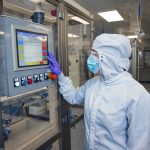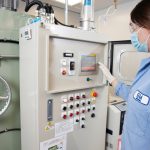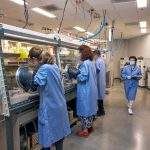
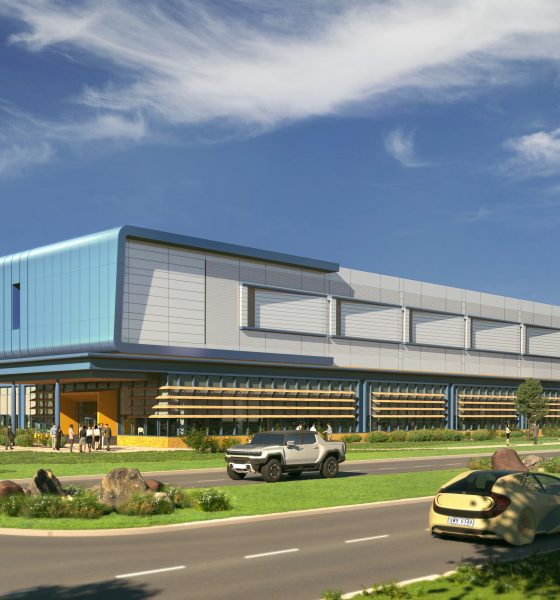
Investor's Corner
GM goes all-in on EV battery development with new Michigan facility
General Motors is going all-in on its electric vehicle investment. The legacy automaker announced today that it would be building a new battery cell research and innovation facility, known as the Wallace Battery Cell Innovation Center, in Warren, Michigan.
“Today, General Motors announced the Wallace Battery Cell Innovation Center, an all-new facility that will significantly expand the company’s battery technology operations and accelerate development and commercialization of longer range, more affordable electric vehicle batteries. The Wallace Center will be located on the campus of GM’s Global Technical Center in Warren, Michigan,” the automaker wrote in a press release.
Architectural rendering of the completed first phase of GM’s Wallace Battery Cell Innovation Center, which will expand the company’s battery technology operations and accelerate development and commercialization of longer range, more affordable electric vehicle (EV) batteries.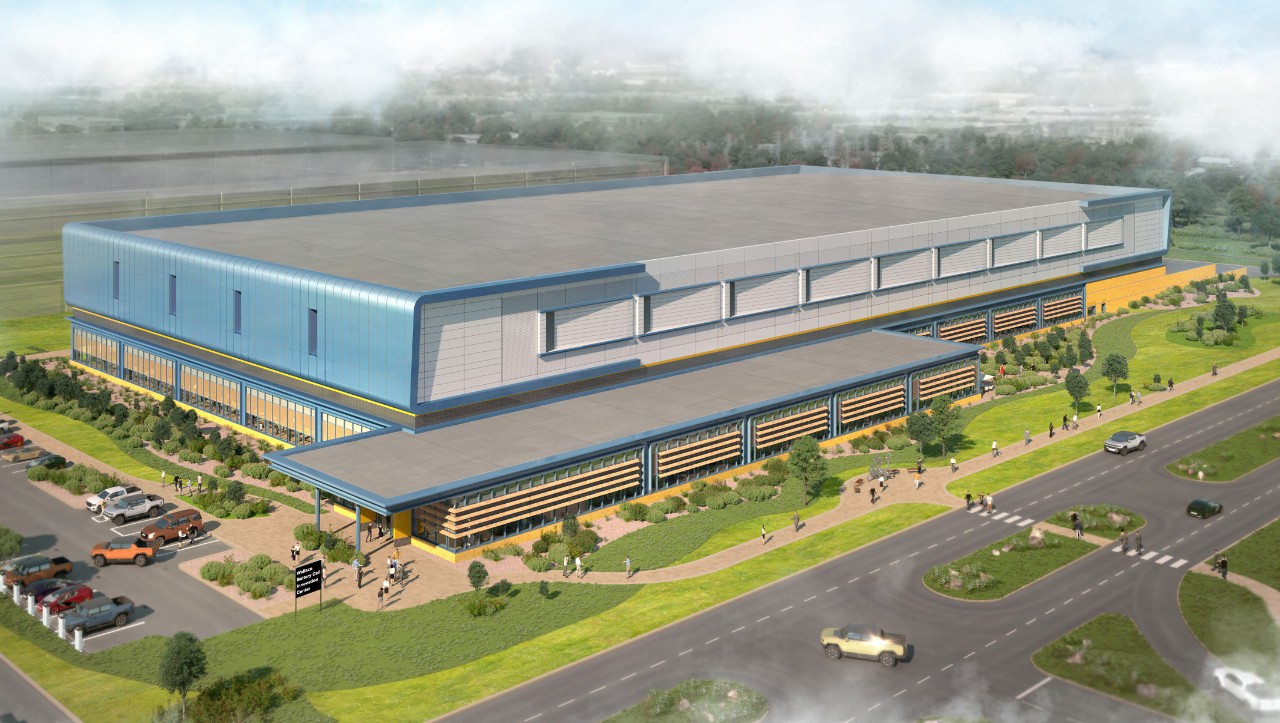
On the heels of an announcement last week that hinted toward a primary focus on electric vehicle software development, GM is now expanding its battery manufacturing efforts through a dedicated cell research facility. Battery cells are the most crucial and most expensive part of electric vehicle development. While EV leader Tesla is developing cells in-house and simultaneously buying batteries from suppliers Panasonic, LG Chem, and CATL, other companies that are now expanding EV operations are utilizing their own strategies in an attempt to become the global leader in electric cars.
GM hopes that the Wallace Center will “play a pivotal role in advancing GM’s vision of an all-electric future and help pave the way to widespread adoption of EVs.” Ultimately, the goal is to reduce the cost of electric vehicle cells by at least 60 percent, all hinged on the development of GM’s Ultium battery.
- A GM Battery Research and Development electrochemist sets up testing parameters in the cell assembly room of GM’s R&D labs in Warren, Michigan.
- GM battery Research and Development engineers test new battery electrode slurry in the mixing room of the company’s R&D labs in Warren, Michigan.
- GM Research and Development Battery Cell Systems Research Director Mei Cai, Ph.D., leads a team of electrochemists in developing prototype cells at the electrolyte lab at GM’s Global Technical Center in Warren, Michigan.
The Wallace Center could be completed as soon as mid-2022, the company said. The facility will be working in conjunction with GM’s other battery development sites, including the Research and Development Chemical and Materials’ Subsystems Lab and the Estes Battery Systems Lab, which is the largest battery validation lab in North America at over 100,000 square feet in size.
The first prototype electric vehicle cells are expected to be built in Q4 2022. “The Wallace Center will significantly ramp up development and production of our next-generation Ultium batteries and our ability to bring next-generation EV batteries to market,” Dogu Parks, GM’s Executive Vice President of Global Product Development, Purchasing and Supply Chain, said. “The addition of the Wallace Center is a massive expansion of our battery development operations and will be a key part of our plan to build cells that will be the basis of more affordable EVs with longer range in the future.”
It is no secret GM has sparred with battery cell issues in the past. A recent string of recalls from the automaker and the NHTSA has taken tens of thousands of Chevrolet Bolt EVs off the road. These recalls were caused by “the simultaneous presence of two rare manufacturing defects in the same battery cell.” The cells GM used in the Bolt were supplied by LG, and the automaker has confirmed that the cells have reentered production after ensuring that “customers can safely and confidently drive, charge, and park the Chevy Bolt EV and EUV.”
Don’t hesitate to contact us with tips! Email us at tips@teslarati.com, or you can email me directly at joey@teslarati.com.

Investor's Corner
Tesla price target boost from its biggest bear is 95% below its current level

Tesla stock (NASDAQ: TSLA) just got a price target boost from its biggest bear, Gordon Johnson of GLJ Research, who raised his expected trading level to one that is 95 percent lower than its current trading level.
Johnson pushed his Tesla price target from $19.05 to $25.28 on Wednesday, while maintaining the ‘Sell’ rating that has been present on the stock for a long time. GLJ has largely been recognized as the biggest skeptic of Elon Musk’s company, being particularly critical of the automotive side of things.
Tesla has routinely been called out by Johnson for negative delivery growth, what he calls “weakening demand,” and price cuts that have occurred in past years, all pointing to them as desperate measures to sell its cars.
Johnson has also said that Tesla is extremely overvalued and is too reliant on regulatory credits for profitability. Other analysts on the bullish side recognize Tesla as a company that is bigger than just its automotive side.
Many believe it is a leader in autonomous driving, like Dan Ives of Wedbush, who believes Tesla will have a widely successful 2026, especially if it can come through on its targets and schedules for Robotaxi and Cybercab.
Justifying the price target this week, Johnson said that the revised valuation is based on “reality rather than narrative.” Tesla has been noted by other analysts and financial experts as a stock that trades on narrative, something Johnson obviously disagrees with.
Dan Nathan, a notorious skeptic of the stock, turned bullish late last year, recognizing the company’s shares trade on “technicals and sentiment.” He said, “From a trading perspective, it looks very interesting.”
Tesla bear turns bullish for two reasons as stock continues boost
Johnson has remained very consistent with this sentiment regarding Tesla and his beliefs regarding its true valuation, and has never shied away from putting his true thoughts out there.
Tesla shares closed at $431.40 today, about 95 percent above where Johnson’s new price target lies.
Investor's Corner
Tesla gets price target bump, citing growing lead in self-driving
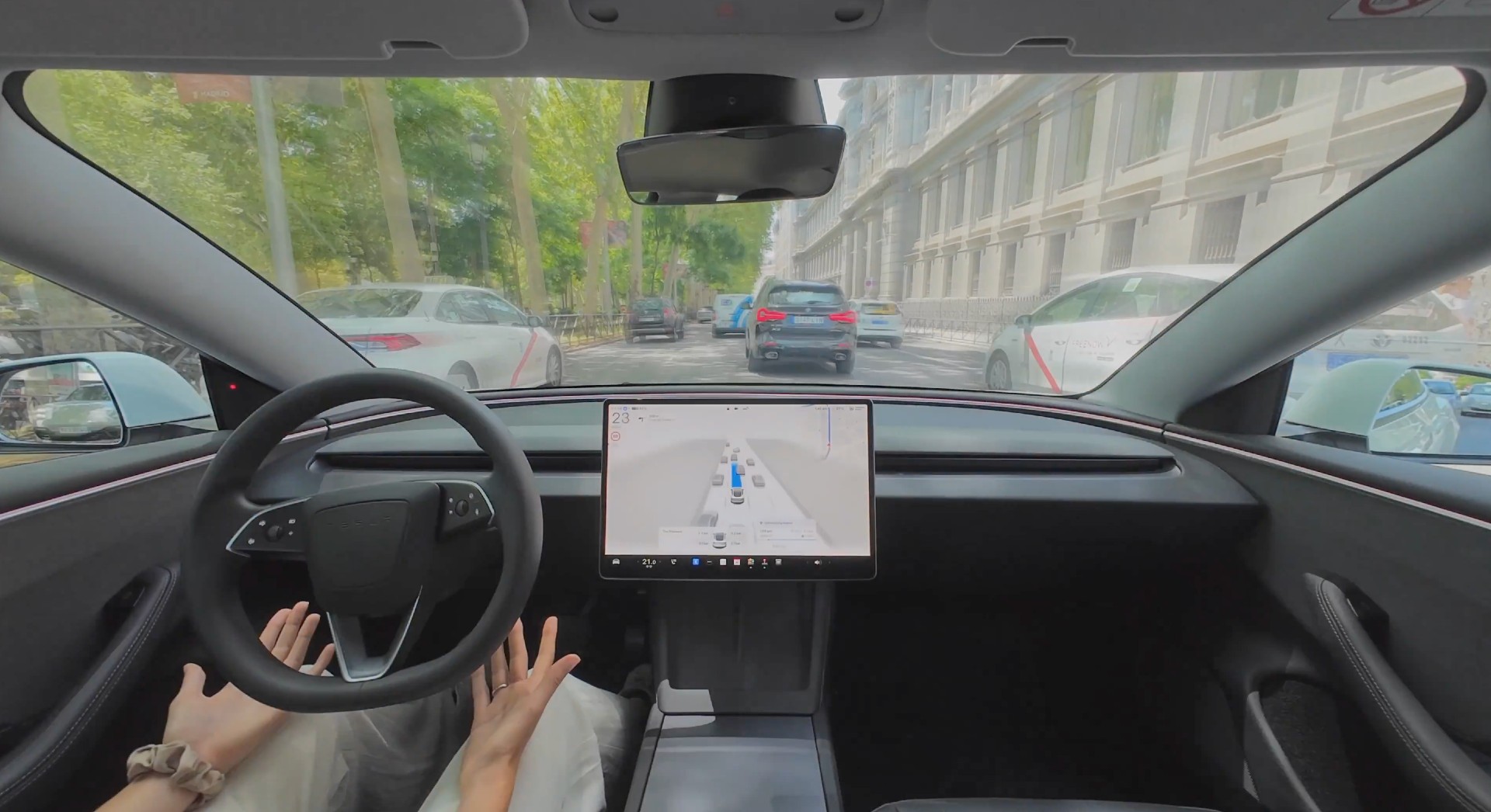
Tesla (NASDAQ: TSLA) stock received a price target update from Pierre Ferragu of Wall Street firm New Street Research, citing the company’s growing lead in self-driving and autonomy.
On Tuesday, Ferragu bumped his price target from $520 to $600, stating that the consensus from the Consumer Electronics Show in Las Vegas was that Tesla’s lead in autonomy has been sustained, is growing, and sits at a multiple-year lead over its competitors.
CES 2026 validates Tesla’s FSD strategy, but there’s a big lag for rivals: analyst
“The signal from Vegas is loud and clear,” the analyst writes. “The industry isn’t catching up to Tesla; it is actively validating Tesla’s strategy…just with a 12-year lag.”
The note shows that the company’s prowess in vehicle autonomy is being solidified by lagging competitors that claim to have the best method. The only problem is that Tesla’s Vision-based approach, which it adopted back in 2022 with the Model 3 and Model Y initially, has been proven to be more effective than competitors’ approach, which utilizes other technology, such as LiDAR and sensors.
Currently, Tesla shares are sitting at around $433, as the company’s stock price closed at $432.96 on Tuesday afternoon.
Ferragu’s consensus on Tesla shares echoes that of other Wall Street analysts who are bullish on the company’s stock and position within the AI, autonomy, and robotics sector.
Dan Ives of Wedbush wrote in a note in mid-December that he anticipates Tesla having a massive 2026, and could reach a $3 trillion valuation this year, especially with the “AI chapter” taking hold of the narrative at the company.
Ives also said that the big step in the right direction for Tesla will be initiating production of the Cybercab, as well as expanding on the Robotaxi program through the next 12 months:
“…as full-scale volume production begins with the autonomous and robotics roadmap…The company has started to test the all-important Cybercab in Austin over the past few weeks, which is an incremental step towards launching in 2026 with important volume production of Cybercabs starting in April/May, which remains the golden goose in unlocking TSLA’s AI valuation.”
Tesla analyst breaks down delivery report: ‘A step in the right direction’
Tesla has transitioned from an automaker to a full-fledged AI company, and its Robotaxi and Cybercab programs, fueled by the Full Self-Driving suite, are leading the charge moving forward. In 2026, there are major goals the company has outlined. The first is removing Safety Drivers from vehicles in Austin, Texas, one of the areas where it operates a ride-hailing service within the U.S.
Ultimately, Tesla will aim to launch a Level 5 autonomy suite to the public in the coming years.
Investor's Corner
Tesla Q4 delivery numbers are better than they initially look: analyst
The Deepwater Asset Management Managing Partner shared his thoughts in a post on his website.

Longtime Tesla analyst and Deepwater Asset Management Managing Partner Gene Munster has shared his insights on Tesla’s Q4 2025 deliveries. As per the analyst, Tesla’s numbers are actually better than they first appear.
Munster shared his thoughts in a post on his website.
Normalized December Deliveries
Munster noted that Tesla delivered 418k vehicles in the fourth quarter of 2025, slightly below Street expectations of 420k but above the whisper number of 415k. Tesla’s reported 16% year-over-year decline, compared to +7% in September, is largely distorted by the timing of the tax credit expiration, which pulled forward demand.
“Taking a step back, we believe September deliveries pulled forward approximately 55k units that would have otherwise occurred in December or March. For simplicity, we assume the entire pull-forward impacted the December quarter. Under this assumption, September growth would have been down ~5% absent the 55k pull-forward, a Deepwater estimate tied to the credit’s expiration.
“For December deliveries to have declined ~5% year over year would imply total deliveries of roughly 470k. Subtracting the 55k units pulled into September results in an implied December delivery figure of approximately 415k. The reported 418k suggests that, when normalizing for the tax credit timing, quarter-over-quarter growth has been consistently down ~5%. Importantly, this ~5% decline represents an improvement from the ~13% declines seen in both the March and June 2025 quarters.“
Tesla’s United States market share
Munster also estimated that Q4 as a whole might very well show a notable improvement in Tesla’s market share in the United States.
“Over the past couple of years, based on data from Cox Automotive, Tesla has been losing U.S. EV market share, declining to just under 50%. Based on data for October and November, Cox estimates that total U.S. EV sales were down approximately 35%, compared to Tesla’s just reported down 16% for the full quarter. For the first two months of the quarter, Cox reported Tesla market share of roughly a 65% share, up from under 50% in the September quarter.
“While this data excludes December, the quarter as a whole is likely to show a material improvement in Tesla’s U.S. EV market share.“
